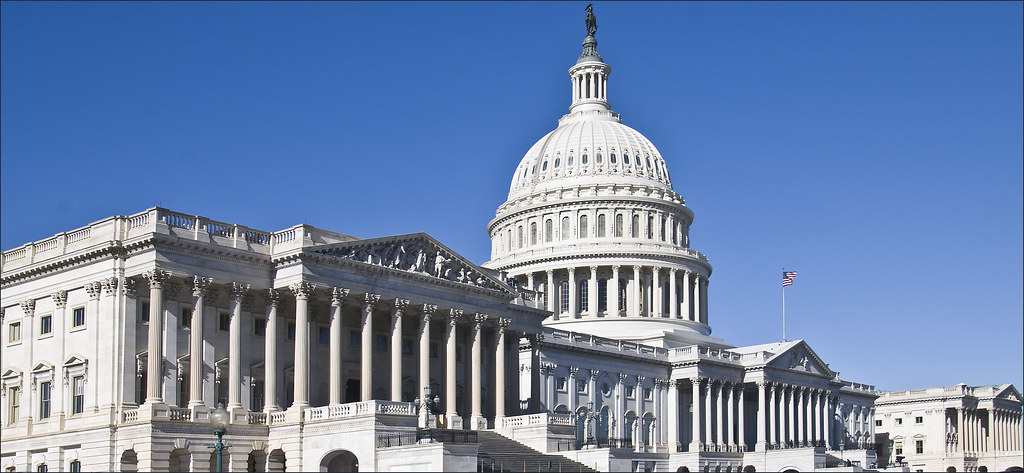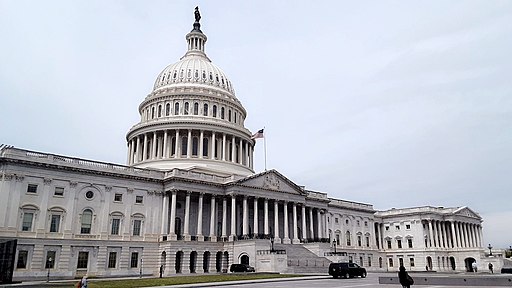Tag: Congressional election
-
All Connecticut U.S. House incumbents file to run for re-election

The filing deadline for candidates running for Congress in Connecticut this year was June 7, 2022. Eleven candidates are running for Connecticut’s five U.S. House districts, including five Democrats and six Republicans. That’s 2.2 candidates per district, down from 2.6 in 2020 and 2018. Here are some other highlights from this year’s filings: This is…
-
Cheney, Bouchard, and Hageman run in Republican primary for Wyoming’s At-Large District

Incumbent Liz Cheney, Anthony Bouchard, Harriet Hageman, and two others are running in the Republican primary for Wyoming’s At-large Congressional District on August 16, 2022. According to the Federal Election Commission (FEC), Cheney, who was first elected to represent this district in 2016, Bouchard, and Hageman lead the primary field in fundraising heading into the…
-
New York’s 23rd Congressional District Republican primary features former gubernatorial nominee, state party chairman

Nicholas A. Langworthy and Carl Paladino are running in New York’s 23rd Congressional District Republican primary on August 23, 2022. Incumbent Rep. Christopher Jacobs (R) withdrew from the primary on June 3. Spectrum News 1’s Ryan Whalen wrote, “The election opened up […] when Rep. Chris Jacobs dropped out of the race. Jacobs faced immense pressure from…
-
Previewing U.S. Senate general elections

Elections to the United States Senate will be held on November 8, 2022. Thirty-four of the 100 seats are up for regular election. Those elected to the U.S. Senate in the 34 regular elections will begin six-year terms on January 3, 2023. Two special elections are also scheduled for November 8. One special election will…
-
Oklahoma sees no contested Democratic U.S. House primaries for the first time since at least 2014

The filing deadline for candidates running for Congress in Oklahoma this year was April 14, 2022. Twenty-eight candidates are running for Oklahoma’s five U.S. House districts, including five Democrats and 23 Republicans. That’s 5.6 candidates per district, more than the 5.4 candidates per district in 2020 and less than the 7.2 in 2018. Here are…
-
The first-ever top-four congressional primary is on June 11 in Alaska

A special election for Alaska’s At-Large Congressional District in the U.S. House will take place in 2022. Former incumbent Rep. Don Young (R) died on March 18, 2022. A top-four special primary is on June 11, 2022. This is the first top-four congressional primary in U.S. history. All candidates will appear on the same ballot with their…
-
Cuellar leads in TX-28 runoff by fewer than 200 votes based on unofficial returns; recount possible

Incumbent Henry Cuellar and Jessica Cisneros ran in the Democratic primary runoff for Texas’ 28th Congressional District on May 24. The race remained too close to call at 9:00 a.m. EDT on May 25, 2022. Cuellar led with 50.2% of the vote. Under state law, candidates may request a recount if the margin of victory…
-
McBath wins Democratic primary in Georgia’s 7th District

U.S. Rep. Lucy McBath defeated U.S. Rep. Carolyn Bourdeaux and Donna McLeod in the May 24 Democratic primary in Georgia’s 7th Congressional District near Atlanta. McBath received 63% of the vote, Bourdeaux was second with 31%, and McLeod was third with 6%. Bourdeaux and McBath—who led in fundraising and media mentions—were members of the U.S.…
-
Four candidates running in North Carolina’s 1st Congressional District Democratic primary

Four candidates are running in the Democratic primary for North Carolina’s 1st Congressional District. Incumbent G.K. Butterfield (D), who has held the seat since 2004, did not file to run for re-election. Donald Davis and Erica Smith have raised the most money and received the most media attention. Davis has held a seat in the…
-
Eight candidates running in Oregon’s 4th Congressional District Democratic primary election

Eight candidates are running in the Democratic Party primary for Oregon’s 4th Congressional District on May 17, 2022. Incumbent Peter DeFazio (D), who has represented the district since 1987, announced he would not seek re-election in 2022 on Dec. 1, 2021. Doyle Canning, Val Hoyle, Andrew Kalloch, and John Selker lead in fundraising and media…

